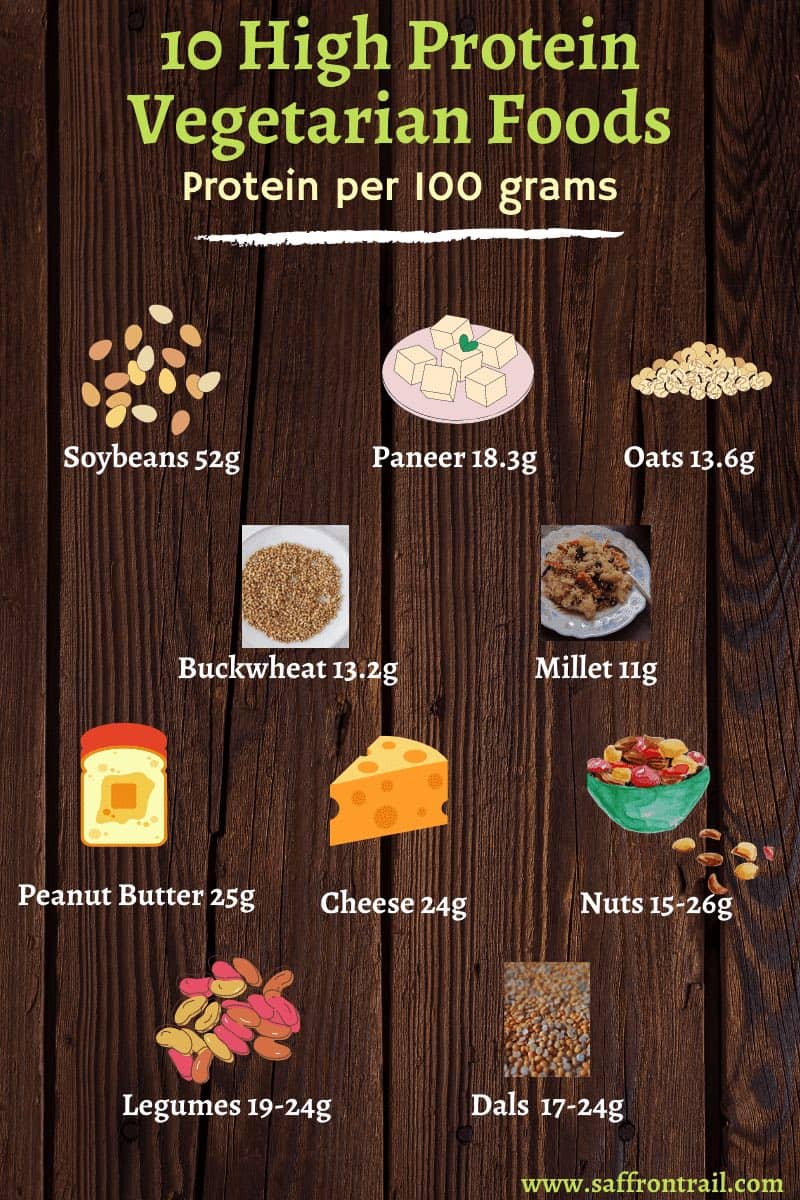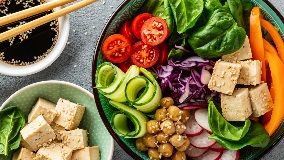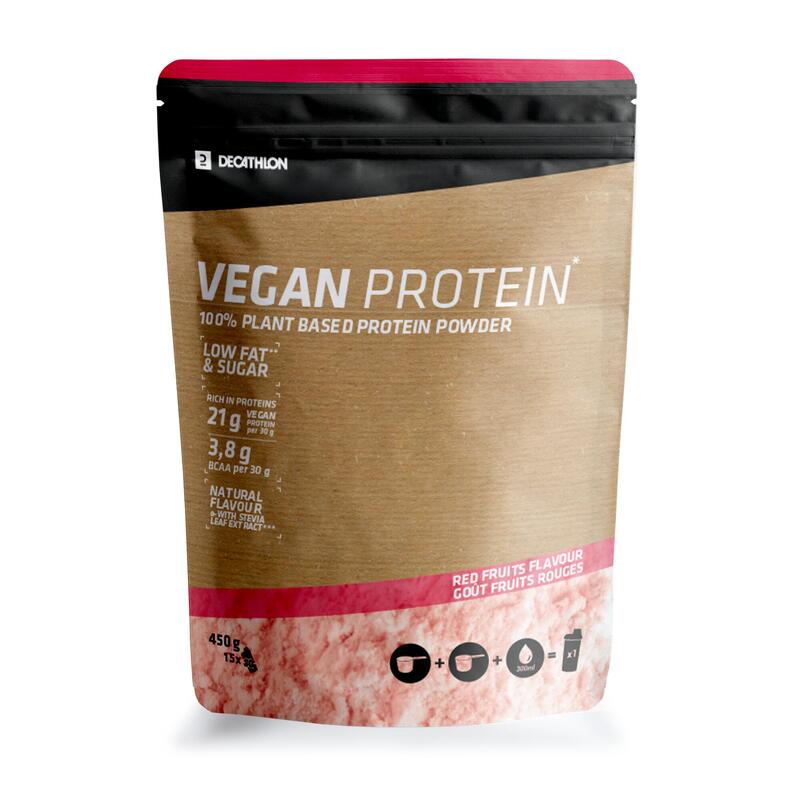
Vegan recipes can be used to satisfy your nutritional goals, regardless of whether you are looking for healthy breakfasts, lunches, dinners, or desserts. They are high in nutrition, rich in fiber, and full-flavored. Plus, they're also easy to make. They are also gluten-free and oil free, and only require three ingredients.
Vegan recipes that are low-fat will not leave you hungry. These vegan recipes are also high in protein, so you'll feel full for hours. Plus, they can help you reach your fitness goals.
Saag aloo, a traditional Indian dish, is also a healthy and delicious vegan option. It's made with spiced potatoes, spinach, and fresh ginger. It is gluten-free, and it contains heart-healthy vegetables. You can freeze the recipe to enjoy it later.

Moroccan pumpkin and chickpea stir-fry is vegan, hearty and loaded with protein-rich chickpeas. Another option is this creamy butternut squash and chickpea curry. This recipe is simple to prepare and a great way for you to get more fiber. This recipe is also free of oil, so it won't make you feel guilty.
You can get great flavor from vegan recipes that have low fat. These recipes are easy and customizable to your tastes. They can also be made gluten-free so that you can eat them without any restrictions. These recipes can be baked in the oven and are a great choice for those with special dietary needs.
For those trying to lose weight, vegan recipes that are low-fat are an excellent option. These recipes are nutrient-dense, full of protein, and they're gluten-free. They are also quick and easy to prepare. These recipes have low calories, so you won’t feel guilty.
A vegan soup made by The Minimalist Baker is full of flavor, fiber, and nutrients. This lentil soup has low fat and is gluten-free. It's a great meal for busy people, too. This soup is also high in umami making it a satisfying meal. This soup also has shredded ginger to add flavor. It is rich and creamy, and great for using up any leftover roast veggies.

Another easy recipe to make is the Vegan kebab from Simple Vegan Blog. This low-fat vegan recipe uses pita bread, vegetables, and a vegan yogurt sauce that is oil-free. It can be made in just 20 minutes and is great for dinner or lunch.
A recipe for Aloo Gobi Matar, an Indian curry, is also available on the Simple Vegan Blog. The recipe is simple and you can modify it with any vegetables. You can also make this recipe with corn tortillas. It is perfect for a family dinner.
Healthy Potato Carrot Tomato Soup has low calories but lots of flavor. It's naturally glutenless, so you won’t feel guilty about having it. It's also full of heart-healthy produce. To make it even heartier, you can add croutons.
FAQ
What is the best way to eat?
Your lifestyle and individual needs will determine the best diet for your body. It's also important to consider how much energy your exercise consumes, whether you prefer low-calorie meals, and if fruits and veggies are something you enjoy.
If you are trying to lose weight, then you may want to try intermittent fasting. Intermittent eating means you only eat specific meals throughout the day. It's not like three big meals. You might find this way to be more beneficial than traditional diets, which have daily calorie counts.
Intermittent fasting has been shown to improve insulin sensitivity, reduce inflammation and lower the risk of developing diabetes. Other studies suggest that intermittent fasting could promote fat reduction and improve overall body structure.
What is the difference in a calorie from a Kilocalorie?
Calories measure the amount energy in food. Calories are the unit of measurement. One calorie is equal to one degree Celsius in energy.
Kilocalories are another way to describe calories. Kilocalories equal one thousandth of an calorie. 1000 calories are equal to one kilocalorie.
Do I need calories to count?
You may wonder, "What diet is best for you?" or "is counting calories necessary?" The answer is dependent on many factors like your current state of health, your personal goals, how you prefer to eat, and your overall lifestyle.
The Best Diet for Me - Which One is Right For You?
My personal health, goals, lifestyle and preferences will all influence the best diet. There are many diets out there, some good and some bad. Some are better for certain people than others. So what should I do? What can I do to make the right decision?
These are the main questions addressed by this article. It begins with an overview of the different diets today. The pros and cons of each diet are then discussed. Finally, we'll look into how to choose the best one for you.
Let's begin by briefly reviewing the different types and diets.
Diet Types
There are three main types. Low fat, high protein, or ketogenic. Let's briefly discuss them below.
Low Fat Diets
A low-fat diet restricts fat intake. This is accomplished by decreasing the intake of saturated fats like butter, cream cheese, and other dairy products. and replacing them with unsaturated fats (olive oil, avocados, etc.). A low fat diet is often recommended for those who want to lose weight quickly and easily. This kind of diet could cause constipation or heartburn and other digestive problems. In addition, it may lead to vitamin deficiencies if a person doesn't get enough vitamins from their food.
High Protein Diets
High protein diets reduce carbohydrates to favor of proteins. These diets have higher protein levels than other diets. These diets are meant to help increase muscle mass and decrease calories. Unfortunately, they can't provide adequate nutrition for those who eat regularly. They can also be very restrictive so they may not be suitable for everyone.
Ketogenic Diets
The keto diet is also known as the keto diet. They are high on fat but low in carbs and proteins. Athletes and bodybuilders use them because they allow them more time and harder training without getting tired. They do require strict compliance to avoid any side effects like fatigue, headaches, nausea, and headaches.
How can I live my best everyday life?
The first step towards living your best life everyday is to find out what makes you happy. Once you've identified what makes your happy, you can start to work backwards. Asking others about their lives can help you to see how they live the best life possible.
You can also find books such as "How to Live Your Best Life" written by Dr. Wayne Dyer. He talks about finding happiness in all areas of your life and finding fulfillment.
How do I measure body fat
A Body Fat Analyzer (BFA) is the best method to measure bodyfat. These devices are used to measure the percentage of bodyfat in people who desire to lose weight.
How often should I exercise?
Fitness is key to a healthy lifestyle. But, you don't need to spend a specific amount of time exercising. Finding something that you love and sticking with it is the key.
If you work out three times a week, then aim to complete 20-30 minutes of moderate intensity physical activity. Moderate intensity means that you will still be working hard even after your workout is over. This type of exercise burns approximately 300 calories.
Walking is a great option if you are a keen walker. You can do 10-minute walks four days per week. Walking is low-impact and easy on your joints.
Jogging is an alternative to running. You can do it for as little as 15 minutes each day. Running is an excellent way to lose weight and tone your muscles.
Start slowly if you aren't used to doing exercise. You can start with only 5 minutes per week of cardio. Gradually increase duration until you achieve your goal.
Statistics
- This article received 11 testimonials and 86% of readers who voted found it helpful, earning it our reader-approved status. (wikihow.com)
- WHO recommends consuming less than 5% of total energy intake for additional health benefits. (who.int)
- In both adults and children, the intake of free sugars should be reduced to less than 10% of total energy intake. (who.int)
- WHO recommends reducing saturated fats to less than 10% of total energy intake; reducing trans-fats to less than 1% of total energy intake; and replacing both saturated fats and trans-fats to unsaturated fats. (who.int)
External Links
How To
27 Steps to a Healthy Lifestyle if Your Family Only Buys Junk Food
The most common way to eat healthy is to cook at home. This is difficult for people who don't know how to cook healthy meals. This article will offer some suggestions on making healthier choices when dining out.
-
Look for restaurants that offer healthy choices.
-
Order salads, vegetables and meat before placing your order.
-
Ask for sauces with no added sugar.
-
Avoid fried food.
-
Ask for grilled meats, not fried.
-
Don't order dessert unless your really need it.
-
Make sure that you have something else to eat after dinner.
-
Take your time and chew slowly.
-
When you eat, drink plenty of fluids.
-
Don't skip breakfast and lunch.
-
Have fruit and veggies with every meal.
-
Choose milk over soda
-
Sugary drinks should be avoided.
-
Reduce the salt content of your diet.
-
You should limit how often you visit fast food restaurants.
-
Ask someone to join you if you cannot resist temptation.
-
Don't let your children watch too much TV.
-
Keep the television off during meals.
-
Drink no energy drinks
-
Take regular breaks from work.
-
Get up early in the morning and exercise.
-
Get active every day.
-
Start small and progress slowly.
-
Realistic goals are important.
-
Be patient.
-
Find time to exercise even if you don't feel like it.
-
Positive thinking is key.